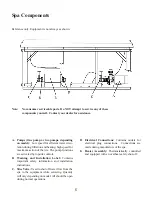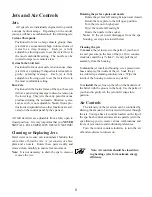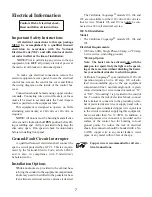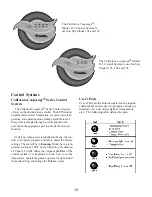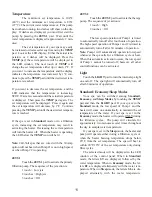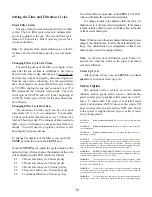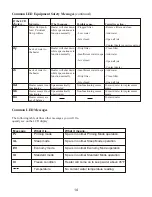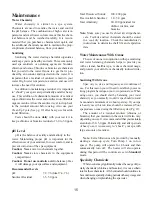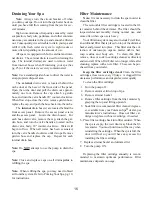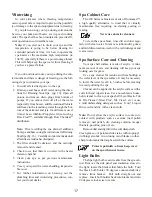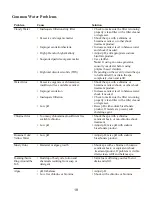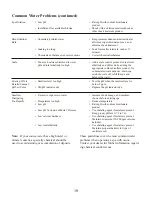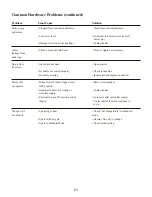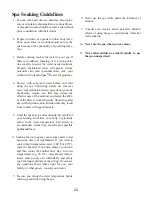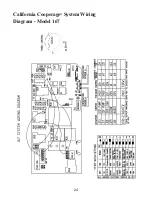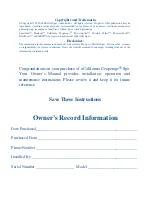
Eye Irritation
• Low pH
• Raise pH with sodium bicarbonate
product.
• Insufficient free available chlorine
• Shock with a chlorine sanitizer/shock or
other shock treatment product.
Skin Irritation/
• Unsanitary/polluted water
• Keep recommended sanitizer residual at
Rash
all times; superchlorinate or use a non-
chlorine shock treatment.
• Soaking too long
• Soak for smaller intervals, such as 15
minutes.
• Chemicals not balanced, excessive ozone
• Correct chemical imbalance.
Scale
• Too much calcium dissolved in water
• Add a scale control product. Adjust total
pH and total alkalinity too high
alkalinity and pH levels by adding the
appropriate sodium bisulfate product; for
concentrated scale deposits - drain spa,
scrub the scale off, refill the spa and
balance the water.
Erratic pH Test
• Sanitizer level too high
• Test the pH, when the sanitizer level is
Results/Unusual
below 5 ppm.
pH Test Color
• Old pH indicator dye
• Replace the pH indicator dye.
Sanitizer
• Excessive organics in water
• Increase shock dosage; add sanitizer;
Dissipating
shower before entering spa.
Too Rapidly
• Temperature too high
• Reduce temperature.
• Low pH
• Raise pH with sodium bicarbonate
product.
• Low pH Corrosion of Metal Fixtures
• Use chelating agent if metals are present.
Keep proper pH level (7.2 to 7.6).
• Low calcium hardness
• Use chelating agent if metals are present.
Maintain minimum 150-200 ppm calcium
hardness.
• Low total alkalinity
• Use chelating agent if metals are present.
Maintain proper alkalinity for type of
sanitizer used.
Note:
If your source water has a high metal or
mineral content, a specialty chemical should be
used to avoid staining or accumulation of deposits.
These guidelines cover the most common water
problems when operating a spa with ozone.
Contact your dealer for further information regard-
ing chemical control issues.
Common Water Problems (continued)
19

